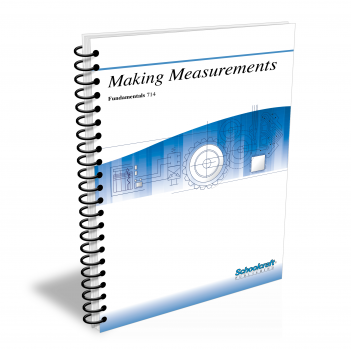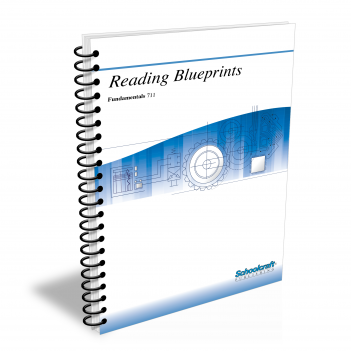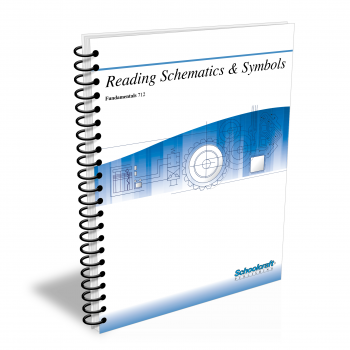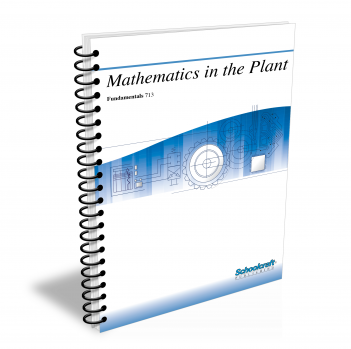Making Measurements

Course Number: 714
An excellent companion textbook to Mathematics, as well as a fine stand-alone textbook, the Making Measurements textbook concentrates on both direct measurements and calculated measurements (e.g., area, torque, speed, and flow rate). Lesson Two, Metric Measurement, describes the basic kinds of metric measurement, the use of prefixes (kilo, centi, milli, etc.), and how and when to convert between metric and English measurement. Following chapters concentrate on the application of measuring tools and instruments for various purposes.
Does your curriculum require additional topics not included in this textbook? Build a customized version of the Making Measurements textbook below.
This textbook has been recently updated
to include topics lists, objectives, & key terms for every chapter.
Recommended Contact Hours – 15
Preview a Chapter
Available Supporting Material
- Table of Contents
- Exam Copies
- Suggested Titles
Table of Contents
Chapter 1: Units of Measurement
Topics: Length; Area; Volume; Angles; Time; Speed and velocity; Mass and weight; Force; Work and power; Pressure; Temperature; Electricity
Learning Objectives:
- Identify various units of measurement.
- State the definition of the joule, the coulomb, and the horsepower
- Explain how to calculate pressure.
- Explain the difference between mass and weight.
- Demonstrate how to measure the volume of an object.
- Explain the difference between the Celsius scale and the Fahrenheit scale.
Chapter 2: Metric Measurement
Topics: Length, area, volume; Mass; Frequency; Speed and velocity; Acceleration; Force and weight; Work, energy, and power; Temperature; Current; Light
Learning Objectives:
- List the seven base units in the SI (metric) system.
- Name three derived units.
- Define work and power in SI units.
- Explain what power is and how it is measured.
- Name two metric measuring instruments and their U.S. Standard equivalents.
Chapter 3: Linear Measurement
Topics: Units; Measurement error; Tolerances; Scales and rules; Scribers and dividers; Bevel gauge; Calipers; Combination square; Using a micrometer
Learning Objectives:
- List five units used for making linear measurements.
- Demonstrate how to use a micrometer.
- Explain what each head of a combination square is used for.
- State the definition of parallax error.
- Define the different types of tolerance.
Chapter 4: Surface Measurement
Topics: Gauge blocks; Measuring screw threads, radius, surface texture; Hardness testing; Testing surface coatings; Detecting defects
Learning Objectives:
- Explain the difference between a continuous dial and a balanced dial on a dial indicator.
- State the definition of pitch on a screw.
- Name two hardness tests.
- Explain why nondestructive testing is preferable to destructive testing on surface coatings.
Chapter 5: Bulk Measurement
Topics: Storing and handling bulk solids; Conveyors; Measuring area, volume, weight, mass, density; Measuring lumber
Learning Objectives:
- Explain why weight-density and the angle of repose are important to workers who handle and store loose bulk material.
- Name the two types of conveyors and list three specific examples of each type.
- Name the three basic measurements of bulk materials.
- Demonstrate how to find the radius of a circle, given its area, and how to find the area of a circle, given its circumference.
- Demonstrate how to convert a typical order of lumber into board feet.
Chapter 6: Motion Measurement
Topics: Relative motion; Displacement; Velocity; Acceleration; Average and instantaneous values; Motion on a curved path; Graphs of motion
Learning Objectives:
- Name the three measurements of motion.
- State the definition of speed.
- Explain the difference between average and instantaneous velocity.
- Demonstrate how to interpret a graph of motion.
- Explain of the velocity of an object is shown on a graph of motion.
Chapter 7: Force Measurement
Topics: How forces act; Combining forces; Force and torque measurement; Analyzing forces
Learning Objectives:
- Name both the metric and the U.S. Standard units of measurement for force, mass, and acceleration.
- State the definition of force.
- Demonstrate how to calculate torque.
- State an advantage of using a balance instead of a scale.
- Demonstrate how to draw a force diagram.
Chapter 8: Temperature Measurement
Topics: Temperature and heat; Temperature-sensing materials; Thermometers; Pyrometers; Response time and accuracy
Learning Objectives:
- Explain the difference between heat and temperature.
- Name four different scales for measuring temperature.
- Explain the use of heat-sensitive pellets, crayons, and paints.
- Explain how Bourdon tubes work.
- Explain how a pyrometer works.
Chapter 9: Fluid Measurement
Topics: States of matter; Measuring liquid level, viscosity, flow rate, volume of flow, specific gravity, pressure, humidity, density
Learning Objectives:
- State the definition of a fluid.
- Describe how liquids differ from gases.
- List the instruments used to measure the level of water.
- Name two instruments that measure the flow of fluids, and explain how they work.
Chapter 10: Electrical Measurement
Topics: Electricity; Electric circuits; Electrical units; Measuring current, potential difference, resistance, power; AC and DC measurements
Learning Objectives:
- List the parts of an atom.
- Define potential difference.
- Identify a wattmeter.
- Describe the difference between alternating current and direct current.
- Describe the difference between an ohmmeter and an ammeter.
Request Exam Copies
Exam Copies
Ready to see a copy of our textbooks? After selecting which textbooks you’d like to review for your course, you can submit your request by either logging in or creating an account so we know where to ship your exam copies. A representative from Schoolcraft will contact you to confirm and finish processing your request.
Exam copies are always free and yours to keep.
Selected Exam Copies
none selected
* Maximum of five copies can be ordered


